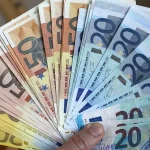The Dangers of Counterfeit Money: Understanding the Risks and Consequences

In a progressively cashless society, the usage of physical currency may appear outdated to some, yet counterfeit money stays a consistent concern that affects individuals, services, and economies worldwide. The elegance of current counterfeiting techniques has just grown, making it essential for customers and entrepreneur to educate themselves about the risks, acknowledgment approaches, and legal consequences of counterfeit currency. This article checks out the intricacies of counterfeit money, lays out the actions one can require to safeguard versus it, and responses often asked concerns about this relevant topic.
Comprehending Counterfeit Money
Counterfeit money refers to currency that has been produced illegally with the intent to trick. Counterfeiters use various approaches to duplicate banknotes and coins, often utilizing high-quality printing innovation and detailed styles that mimic real currency. While the main motive behind producing counterfeit currency is monetary gain, the implications extend beyond simple theft; they can destabilize economies, disadvantage honest services, and lead to serious legal repercussions for those included.
The Impact of Counterfeit Money
Economic Consequences: When counterfeiting becomes extensive, it can result in inflation, a reduction in currency value, and total distrust in the nation's financial system. This suspect can result in customers holding onto their money or going with alternative kinds of transactions, which can further damage the economy.
Influence on Businesses: Businesses, particularly small ones, are often struck hardest by counterfeit currency. Accepting fake notes can cause significant monetary losses and even insolvency. In addition, counterfeiting can damage a company's reputation; clients might be less happy to trust brand names that succumb to counterfeiting schemes.
Legal Repercussions: Unwittingly accepting counterfeit money does not get rid of liability from individuals or organizations. The law usually requires that those who possess counterfeit currency must report it to authorities, as purposefully handling fake money can result in criminal charges.
How to Recognize Counterfeit Money
Acknowledging counterfeit money is vital for protecting oneself from monetary loss. Here are some effective methods to identify fake currency:
Check the Print Quality: Genuine currency has a specific texture, color, and print quality that can be tough to replicate. Examine banknotes for smearing or blurring, which might show counterfeiting.
Try to find Watermarks: Most contemporary banknotes consist of watermarks that are challenging to replicate. Hold the bill as much as the light to see if the watermark exists and clear.
Inspect the Security Thread: Real banknotes have embedded security threads, generally noticeable when held up to the light. Counterfeit bills may do not have these functions, or they might be badly duplicated.
Use a UV Light: Many currencies have elements that fluoresce under ultraviolet light. Inspecting these features can help in figuring out the authenticity of a banknote.
Feel the Texture: Authentic currency is printed on a specific type of paper that feels different from routine paper. Rubbing your fingers over the bill can assist you recognize its credibility.
Tips to Protect Against Counterfeit Currency
To lessen the risk of coming down with counterfeit money, individuals and services can implement the following procedures:
Educate Employees: Regular training sessions on how to find counterfeit money can be beneficial for employees, specifically those in retail settings.
Make Use Of Detection Tools: Invest in counterfeit detection devices such as UV lights, pen testers, or digital note validators that can precisely inspect currency authenticity.
Preserve a Close Eye on Transactions: Encourage alert tracking of cash transactions and screens for possible counterfeit notes.
Legal Aspects of Counterfeit Money
Taking part in the production, circulation, or use of counterfeit currency protests the law in essentially every nation. Legal effects can include large fines and imprisonment. Government firms, such as the U.S. Secret Service, actively examine counterfeit money operations, and people condemned of participation in counterfeiting may face serious penalties.
Often Asked Questions (FAQs).
1. Is it unlawful to unwittingly accept counterfeit money?
Yes, while it might not be a criminal charge to accept counterfeit currency unknowingly, there is a responsibility to report the counterfeit to authorities. Failure to do so can result in civil liabilities.
2. What should I do if I get counterfeit money?
If you think you have actually gotten counterfeit money, do not try to invest it. Instead, report the incident to regional law enforcement or your country's financial authority. Furthermore, record the information of the deal and where you received the currency.
3. Exist specific currencies that are more frequently counterfeited?
Yes. The U.S. dollar is the most extensively counterfeited currency globally, however other currencies like the euro, British pound, and Indian rupee have also been counterfeited thoroughly.
4. How can I guarantee my company isn't accepting counterfeit money?
Train your workers on acknowledging counterfeit notes, purchase detection innovation, and implement stringent cash-handling practices.
5. What can I do to spread out awareness about counterfeiting?
Sharing information through workshops, neighborhood boards, or social media platforms can inform others about the threats and prevention techniques connected to counterfeit currency.
euro falschgeld kaufen .
Counterfeit currency positions considerable threats not just to individual customers but likewise to companies and the economy as a whole. Comprehending how to recognize fake currency, recognizing the further implications of counterfeiting, and taking proactive actions can decrease threats. Awareness and vigilance can make a significant distinction as we continue to navigate a world where counterfeit money remains a threat to financial stability. By equipping themselves with knowledge and tools to combat counterfeiting, individuals and organizations can safeguard themselves and add to a more safe and secure financial environment.
